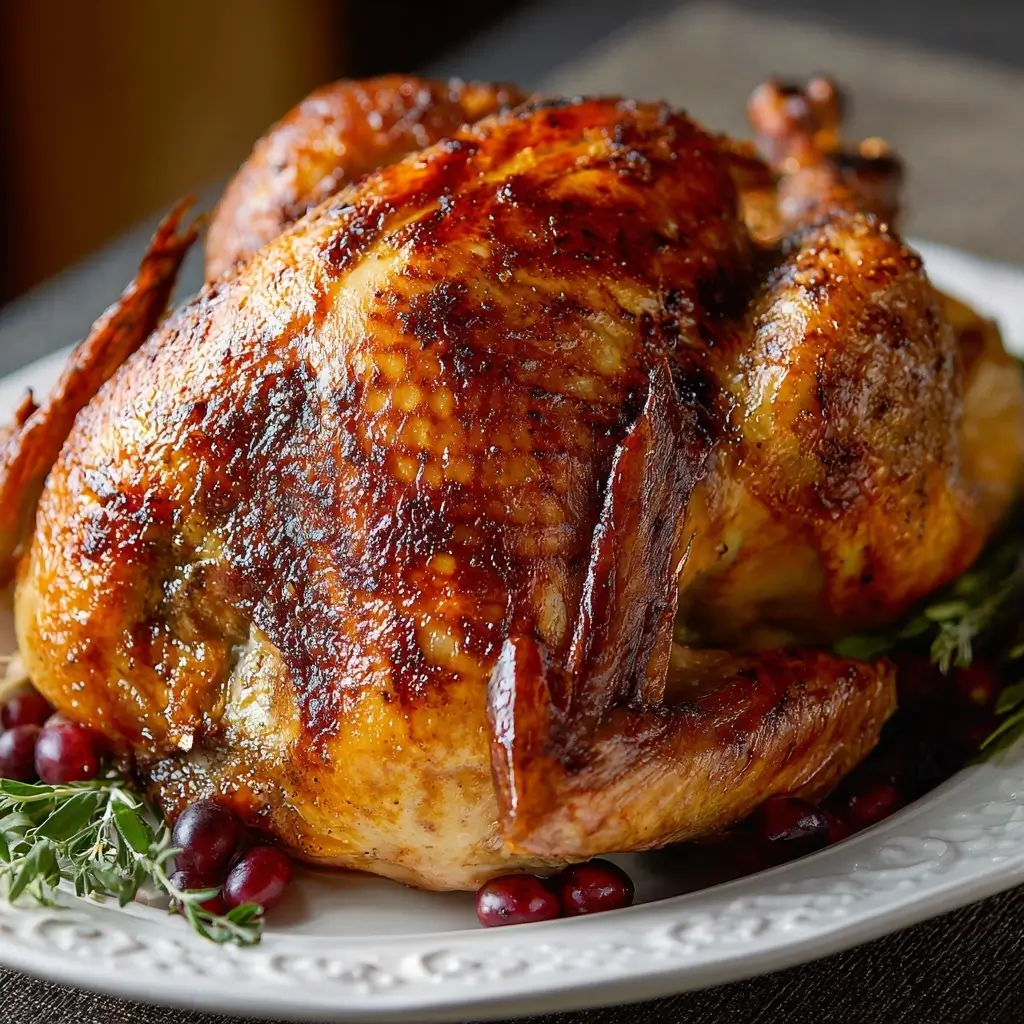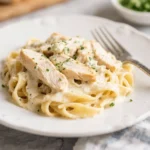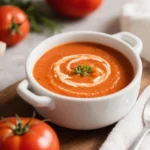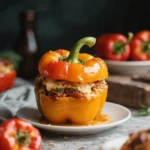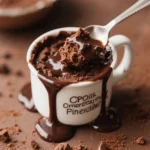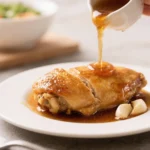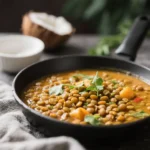Smoked or Brined Turkey: A Flavorful, Juicy Holiday Masterpiece
The art of preparing a smoked or brined turkey has deep roots in culinary traditions that span centuries and continents. While roasting a turkey is a staple in American holiday feasts—especially during Thanksgiving—the techniques of brining and smoking have evolved from ancient preservation methods used by early civilizations. Brining originated as a way to preserve meat before refrigeration, using saltwater solutions to inhibit bacterial growth and extend shelf life. Smoking, similarly, was developed not just for flavor but for its preservative qualities, with smoke creating a protective layer over the meat and further inhibiting spoilage. Over time, these practical methods transformed into gourmet cooking techniques prized for their ability to enhance moisture, tenderness, and depth of flavor. In modern times, brining and smoking have become synonymous with elevated holiday cooking, particularly in North America, where chefs and home cooks alike seek to create turkeys that are succulent, flavorful, and unforgettable.
Today, brined and smoked turkeys represent the pinnacle of festive poultry preparation. The combination of these two techniques—brining first to infuse moisture and seasoning, then smoking slowly over hardwoods—produces a bird that is juicy on the inside and delicately smoky on the outside. This dual-method approach has gained popularity due to its ability to overcome the common pitfalls of dry, bland turkey meat. Whether you’re hosting a large family gathering or aiming to impress guests at a holiday dinner, mastering the smoked or brined turkey can elevate your culinary reputation. The process may seem daunting at first, but with proper planning, patience, and attention to detail, anyone can achieve restaurant-quality results in their own backyard or kitchen.
Ingredients Breakdown: Building Flavor from the Ground Up
The success of a perfectly smoked or brined turkey hinges on the quality and balance of ingredients used throughout the process. Each component plays a crucial role—not just in flavor development, but also in texture, moisture retention, and overall safety. Let’s break down the essential elements:
- Turkey (12–16 pounds): Choose a fresh or properly thawed frozen turkey. Opt for a heritage or organic bird if possible, as they often have better fat distribution and richer flavor. Avoid self-basting turkeys when brining, as they already contain added sodium and oils that can interfere with absorption.
- Kosher Salt (1½ cups): Preferred over table salt because it lacks iodine and anti-caking agents, which can impart off-flavors. Its larger flakes also dissolve more evenly in brine solutions.
- Brown Sugar (1 cup): Adds sweetness to balance the saltiness and promotes caramelization during smoking. It also aids in the Maillard reaction, enhancing browning and crust formation.
- Water (2 gallons): Serves as the base of the brine. Cold filtered water is best to prevent impurities from affecting taste.
- Fresh Herbs (1 cup total): Typically includes rosemary, thyme, sage, and parsley. These aromatic herbs contribute earthy, piney, and floral notes that penetrate the meat during brining.
- Garlic (1 head, halved): Infuses the brine with pungent, savory depth. When roasted later, garlic becomes sweet and mellow, adding complexity.
- Onion (1 large, quartered): Provides natural sweetness and umami, helping round out the flavor profile.
- Black Peppercorns (2 tablespoons): Whole peppercorns release heat and spice gradually, avoiding bitterness from pre-ground pepper.
- Allspice Berries (1 tablespoon): Contribute warm, clove-like, slightly sweet notes commonly found in Caribbean and Middle Eastern cuisines.
- Citrus Fruits (2 oranges and 2 lemons, sliced): Their acidity brightens the brine, cuts through richness, and tenderizes proteins slightly while adding refreshing zest.
- Bay Leaves (4–5 leaves): Earthy and slightly floral, bay leaves are classic in brines and soups, offering subtle background aroma.
- Apple Cider (1 quart): Replaces part of the water to add fruit sugars, tanginess, and additional depth. Fermentable sugars in cider also aid in bark development during smoking.
- Hardwood Chunks or Chips (hickory, apple, cherry, or oak): Used in the smoker for flavor. Hickory gives bold, bacon-like notes; fruitwoods like apple and cherry offer mild sweetness ideal for poultry.
- Butter or Olive Oil (½ cup): Rubbed on the skin before smoking to help crisp it and carry seasonings.
- Optional Aromatics: Star anise, cinnamon sticks, cloves, ginger, juniper berries, or chili peppers for adventurous palates seeking unique flavor twists.
Step-by-Step Recipe: From Brine to Smoke
- Day 1: Prepare the Brine (Allow 12–24 hours)
In a large stockpot, combine 1½ cups kosher salt, 1 cup brown sugar, 2 quarts water, 1 quart apple cider, 1 sliced onion, 1 halved head of garlic, 2 sliced oranges, 2 sliced lemons, 1 cup fresh herbs, 2 tablespoons black peppercorns, 1 tablespoon allspice berries, and 4–5 bay leaves. Heat over medium flame, stirring until salt and sugar fully dissolve. Remove from heat and let cool completely. Once cold, pour into a clean 5-gallon food-safe bucket or cooler. Submerge a fully thawed 12–16 lb turkey in the brine, ensuring it’s entirely covered. If needed, weigh it down with a plate. Refrigerate or keep cold using ice packs if outdoors (maintain temperature below 40°F). Brine for 12–24 hours—no longer, or the meat may become overly salty and spongy. - Day 2: Rinse and Dry the Turkey
Remove turkey from brine and rinse thoroughly under cold water to wash away excess salt and spices. Pat dry inside and out with paper towels. Place on a wire rack set over a baking sheet and refrigerate uncovered for 4–12 hours. This air-drying step is critical—it helps form a pellicle (a tacky surface layer) that allows smoke to adhere better and promotes crispy skin. - Prepare the Smoker
Preheat your smoker to 225°F–250°F. Use a mix of fruitwood (apple or cherry) for sweetness and hickory for depth—avoid strong woods like mesquite, which can overpower poultry. Soak wood chips for 30 minutes if using a gas or electric smoker; chunks work better for charcoal or pellet smokers. Maintain consistent temperature using a digital thermometer. - Season the Turkey
Rub the entire bird with ½ cup softened butter or olive oil, working some under the breast skin for extra moisture. Season generously with freshly ground black pepper, smoked paprika, garlic powder, and optional herbs. Do not add extra salt—remember, the brine already seasoned the meat deeply. - Smoke the Turkey
Place turkey breast-side up on the smoker grate. Insert a meat probe into the thickest part of the breast, avoiding bone. Smoke at 225°F–250°F, maintaining steady airflow and replenishing wood as needed. Plan for approximately 30–40 minutes per pound. Baste lightly every hour after the first two hours with apple juice, melted butter, or pan drippings to boost moisture and shine. - Monitor Internal Temperature
The turkey is done when the breast reaches 160°F and the thighs reach 175°F–180°F. Carryover cooking will raise the breast to 165°F during rest. Avoid opening the smoker too often—this disrupts temperature and smoke flow. - Rest Before Carving
Once cooked, remove turkey from smoker and tent loosely with foil. Let rest for 30–45 minutes. This allows juices to redistribute, ensuring every slice remains moist. Do not skip this step! - Carve and Serve
Use a sharp carving knife to slice breast meat against the grain. Serve with smoked drumsticks and wings, along with your favorite sides like mashed potatoes, stuffing, cranberry sauce, and roasted vegetables.
Tips for Success: Expert Secrets for Perfect Results Every Time
- Thaw Safely: Allow 24 hours of fridge thawing per 4–5 pounds of turkey. Never thaw at room temperature.
- Keep It Cold During Brining: If you don’t have space in the fridge, use a cooler with ice packs, checking regularly to maintain sub-40°F temps.
- Avoid Over-Brining: More than 24 hours risks oversalting and altering protein structure, leading to mushy texture.
- Dry That Skin: Uncovered refrigeration post-brine is non-negotiable for achieving golden, crackling skin.
- Use a Water Pan: In your smoker, place a pan of water to stabilize temperature and add humidity, preventing drying.
- Don’t Wrap Too Early: Unlike brisket, turkey doesn’t need wrapping unless the skin darkens too quickly. If so, tent loosely with foil.
- Invest in Thermometers: Dual-probe wireless thermometers allow real-time monitoring without opening the smoker.
- Save the Drippings: Collect flavorful fat and juices from the drip pan to make rich, smoky gravy.
- Rotate for Even Cooking: In offset smokers, rotate the turkey halfway through for even exposure.
- Serve with Fresh Herbs: Garnish with sprigs of rosemary, thyme, or citrus slices for a stunning presentation.
Variations and Customizations: Make It Your Own
While traditional brined and smoked turkey is delicious on its own, there are countless ways to personalize the recipe to suit your taste preferences or cultural influences:
- Cajun-Style Smoked Turkey: Add cayenne, smoked paprika, garlic powder, onion powder, oregano, and thyme to the rub. Inject the turkey with a spicy butter mixture before smoking.
- Asian-Inspired Brine: Replace apple cider with coconut water and soy sauce; add ginger, star anise, lemongrass, and green onions. Finish with a sesame oil glaze.
- Herb-Centric Brine: Focus on garden-fresh flavors with tarragon, chives, dill, and lemon zest. Ideal for spring celebrations.
- Maple-Bourbon Brine: Substitute brown sugar with pure maple syrup and add ½ cup bourbon to the brine for a rich, complex sweetness.
- Beer-Brined Turkey: Use a malty lager or amber ale instead of apple cider for deeper, toasty notes.
- Spiced Citrus Brine: Add cinnamon sticks, whole cloves, and cardamom pods for a warm, holiday-inspired profile.
- Grilled & Smoked Hybrid: Start on indirect heat of a charcoal grill, then finish in a smoker for layered smokiness.
- Stuffed Smoked Turkey: While not recommended for food safety reasons during long smokes, you can stuff after cooking or prepare dressing separately and infuse with smoked aromatics.
- Deconstructed Smoked Turkey: Smoke individual parts (breasts, legs, wings) for more control over doneness and easier serving.
- Glazed Finish: In the last 30 minutes, brush with honey, maple syrup, or apricot jam mixed with Dijon mustard for a sticky, glossy exterior.
Health Considerations and Nutritional Value
Smoked or brined turkey can be a healthy centerpiece when prepared mindfully. Here’s what you should know:
- High-Quality Protein: Turkey is rich in lean protein, providing about 25g per 3-ounce serving, essential for muscle repair and satiety.
- Vitamins and Minerals: Excellent source of B vitamins (B3, B6, B12), selenium, zinc, and phosphorus, supporting metabolism, immunity, and nervous system function.
- Low in Fat (Especially White Meat): Skinless white meat is very lean. However, dark meat contains more healthy fats and iron.
- Sodium Content: The biggest concern with brined turkey is sodium. A typical brine can increase sodium levels significantly. To reduce this:
- Use lower-sodium alternatives like sea salt or reduce salt quantity slightly.
- Rinse thoroughly after brining.
- Limit additional salt in side dishes.
- Consider shorter brining times (12 hours max).
- Smoking Byproducts: While delicious, prolonged exposure to smoke introduces polycyclic aromatic hydrocarbons (PAHs). Minimize risk by:
- Avoiding charring or burning the skin.
- Using indirect heat and moderate temperatures.
- Trimming excessively smoked areas before eating.
- Caloric Density: Adding butter, oils, and sugary glazes increases calories. For lighter versions, use olive oil, herb rubs, and skip heavy basting.
- Dietary Adaptations:
- Keto: Skip sugar in brine (use erythritol or monk fruit blend), focus on fat-rich rubs.
- Gluten-Free: Ensure all ingredients (especially store-bought broth or cider) are certified gluten-free.
- Low-Sodium Diets: Consider dry-brining (salt rubbed on surface) instead of wet brine for more control.
Nutrition Estimate (per 4 oz serving, skin removed):
Calories: 150 | Protein: 26g | Fat: 5g | Saturated Fat: 1.5g | Cholesterol: 80mg | Sodium: 400–800mg (varies widely based on brine) | Carbohydrates: 0g
Full Ingredients List
- 1 whole turkey (12–16 lbs), fresh or fully thawed
- 1½ cups kosher salt
- 1 cup packed brown sugar
- 2 quarts cold water
- 1 quart apple cider (unsweetened)
- 1 large yellow onion, quartered
- 1 head garlic, halved crosswise
- 2 oranges, sliced
- 2 lemons, sliced
- 1 cup fresh herbs (rosemary, thyme, sage, parsley)
- 2 tablespoons whole black peppercorns
- 1 tablespoon allspice berries
- 4–5 dried bay leaves
- ½ cup unsalted butter, softened, or olive oil
- Freshly ground black pepper (to taste)
- 1 tablespoon smoked paprika (optional)
- Wood chunks or chips: apple, cherry, hickory, or oak
- Apple juice or chicken broth (for basting, optional)
Detailed Directions
- Make the Brine: In a large pot, combine water, apple cider, salt, brown sugar, onion, garlic, citrus slices, herbs, peppercorns, allspice, and bay leaves. Bring to a simmer over medium heat, stirring until salt and sugar dissolve completely. Remove from heat and cool to room temperature, then refrigerate until fully chilled (at least 2 hours).
- Brine the Turkey: Place the turkey in a clean container large enough to submerge it completely. Pour chilled brine over the turkey. Add ice packs or bottles of frozen water if keeping in a cooler. Refrigerate for 12–24 hours, turning once halfway through for even brining.
- Rinse and Dry: After brining, remove turkey and rinse inside and out under cold running water. Pat dry with paper towels. Place on a wire rack over a tray and refrigerate uncovered for 4–12 hours.
- Preheat Smoker: Set smoker to 225°F–250°F. Use a blend of fruitwood and mild hickory. Fill water pan with hot water to maintain humidity.
- Season Turkey: Rub butter or oil all over the turkey, including under the breast skin. Sprinkle with black pepper and smoked paprika. Do not add salt.
- Smoke: Place turkey breast-side up on the grate. Insert meat thermometer into the breast. Smoke for 30–40 minutes per pound. Baste every hour after the second hour if desired.
- Check Temperature: Cook until breast reaches 160°F and thighs reach 175°F–180°F. Expect 4–6 hours depending on size.
- Rest: Remove turkey, tent with foil, and rest for 30–45 minutes before carving.
- Serve: Carve carefully and serve immediately with gravy made from drippings.
Frequently Asked Questions (FAQ)
Can I brine a self-basting turkey?
No. Self-basting turkeys are injected with a saline solution and oils that interfere with brine absorption and can make the meat overly salty and soggy.
Do I need to inject the turkey if I’m brining?
Not necessary. Brining provides deep moisture penetration. However, injecting a flavored butter or broth can add extra juiciness and flavor layers.
Can I use table salt instead of kosher salt?
Yes, but adjust quantity. Table salt is denser—use about ¾ cup instead of 1½ cups kosher salt to avoid oversalting.
What’s the best wood for smoking turkey?
Fruitwoods like apple, cherry, or peach are ideal. Combine with a small amount of hickory for complexity. Avoid strong woods like mesquite.
How do I prevent dry turkey?
Brining, proper resting, and not overcooking are key. Use a reliable thermometer and pull the breast at 160°F.
Can I smoke a frozen turkey?
Absolutely not. Always fully thaw the turkey in the refrigerator before brining or smoking for food safety and even cooking.
Is smoked turkey safe to eat cold?
Yes, once properly cooked and cooled, smoked turkey makes excellent sandwiches and salads. Store in the fridge within 2 hours of cooking.
Can I use a gas grill for smoking?
Yes. Use a smoker box with soaked wood chips and cook on indirect heat with the lid closed.
Why did my turkey turn out too salty?
Likely causes: over-brining, using table salt without adjusting, or using a self-basting turkey. Always rinse well after brining.
Can I make this ahead of time?
Yes! Smoke the turkey 1–2 days in advance, carve, and refrigerate. Reheat gently in the oven at 300°F wrapped in foil with broth to retain moisture.
Summary
A perfectly smoked or brined turkey delivers unmatched juiciness, rich flavor, and a beautiful smoky aroma that elevates any holiday meal. With careful preparation, temperature control, and attention to detail, you can master this impressive dish and create lasting culinary memories.
